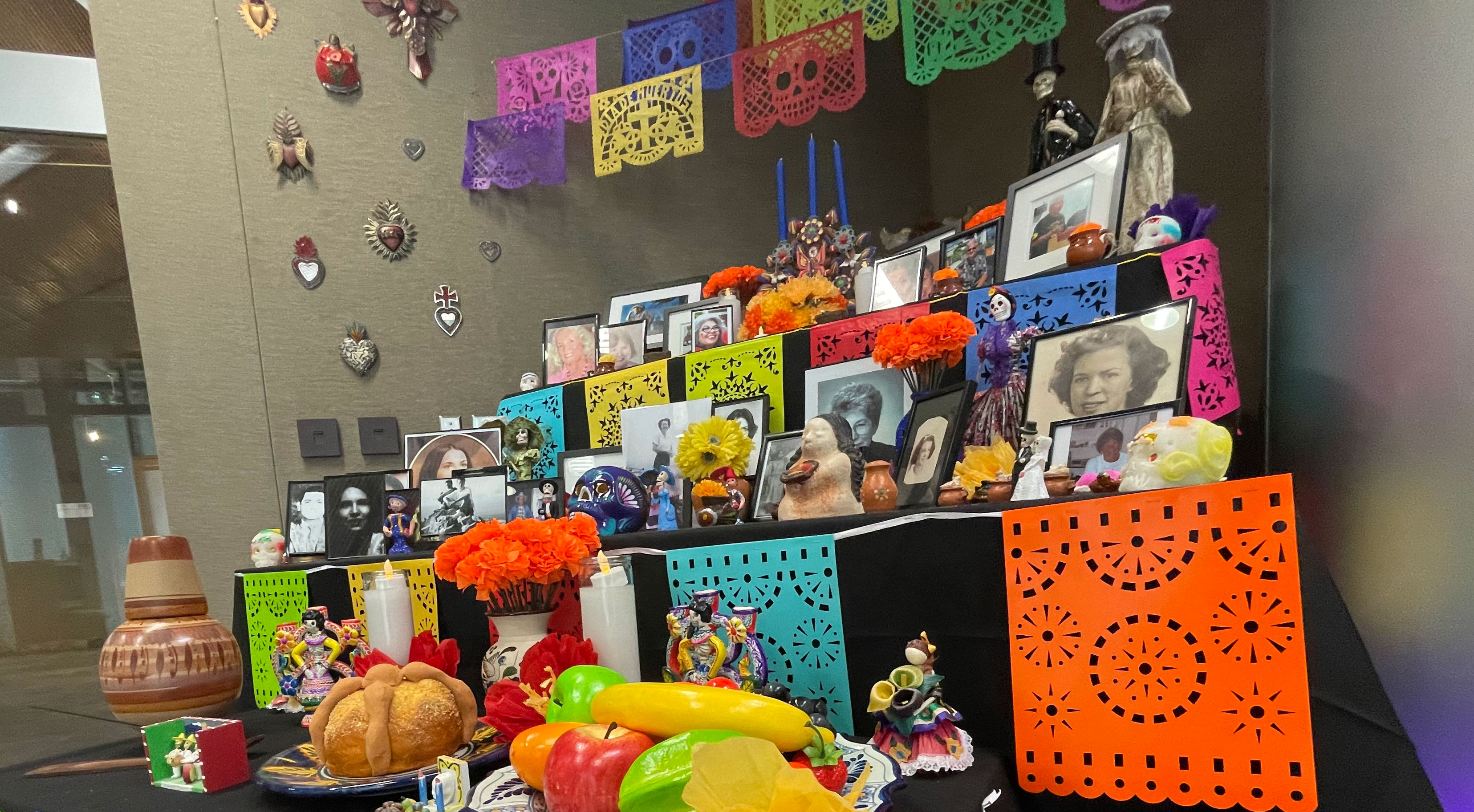 Día de los Muertos is an ancient blend of Native American and European traditions that is becoming more familiar to a growing number of people internationally. This altar is in the University of Arizona's Special Collections Library.
Día de los Muertos is an ancient blend of Native American and European traditions that is becoming more familiar to a growing number of people internationally. This altar is in the University of Arizona's Special Collections Library.
Before Europeans arrived in the Western Hemisphere, anthropologists say some Native American populations had been honoring and celebrating the dead for generations.
In what is today Mexico, the traditional rituals blended with Catholic practices and gave birth to Dia de los Muertos- Day of the Dead - which is celebrated on November 1st and November 2nd of each year.
The event is not Halloween, nor is it about sadness and despair, according to people familiar with the tradition.
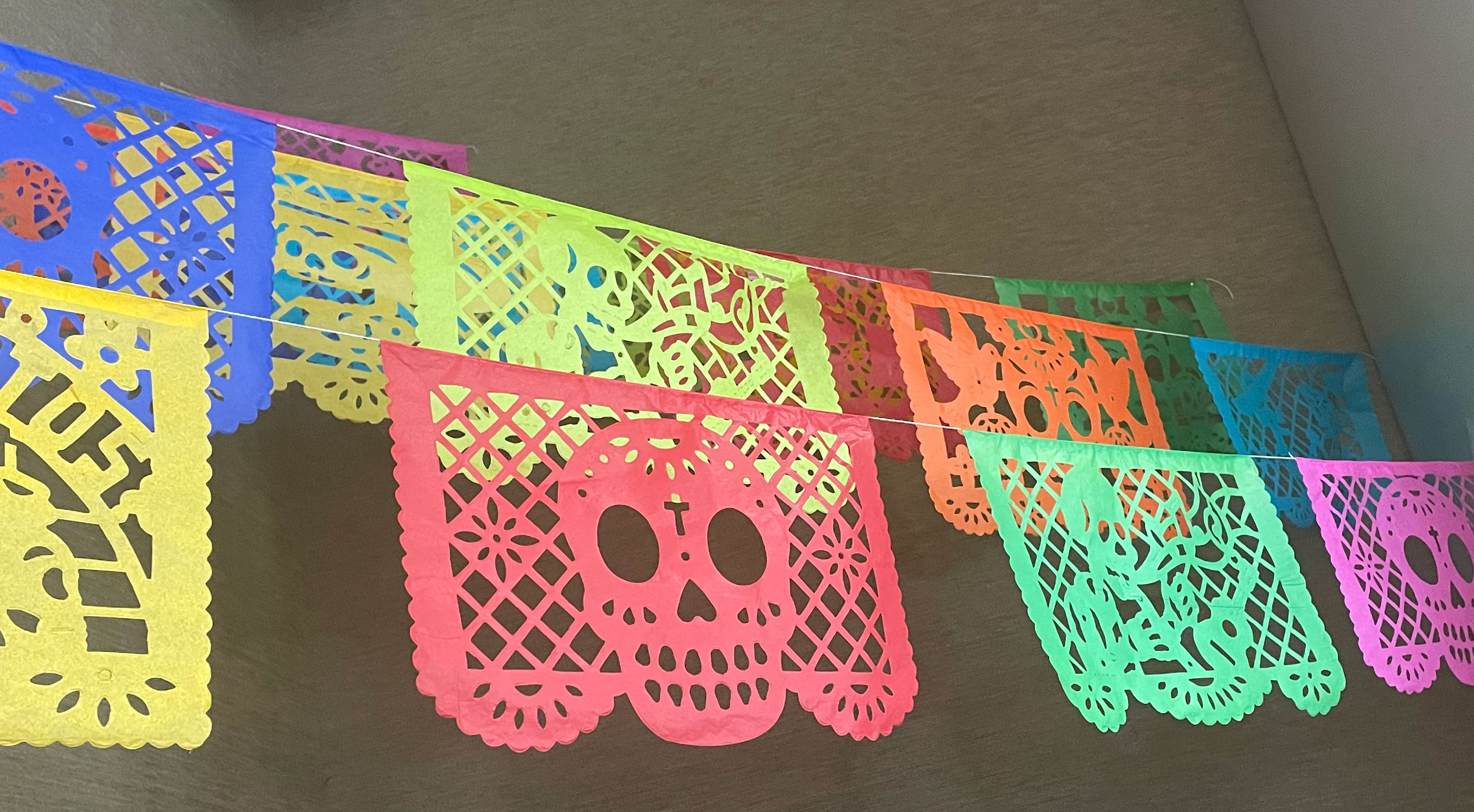 Papel Picado, or tissue paper with special decorative cuts, is part of the tradition of Día de los Muertos.
Papel Picado, or tissue paper with special decorative cuts, is part of the tradition of Día de los Muertos.
Anna Ochoa O'Leary is a professor and the department head of Mexican American Studies at the University of Arizona.
"We celebrate life, the life that we had with those who have passed on," Ochoa O'Leary says.
Some people build altars and decorate them with pictures, mementos and other articles such as dog figurines since canines are said to guide the spirits back to their terrestrial homes to enjoy a taste of their previous lives.
"Offerings, their favorite food, water, anything that would draw those spirits back to earth and have them spend some time with those of us who are still here," Ochoa O'Leary adds.
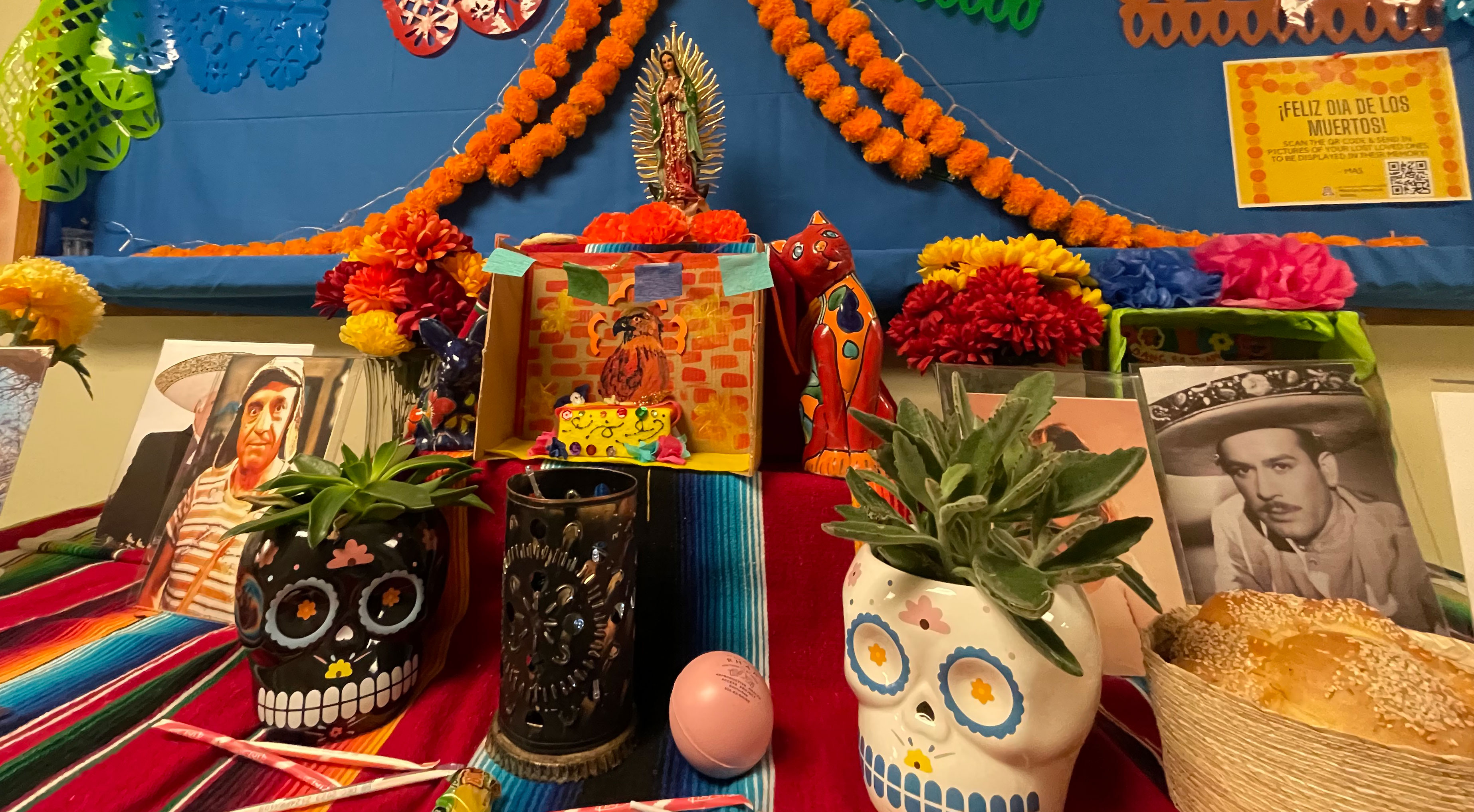 This Día de los Muerto display is at University of Arizona's César E. Chávez building, where Mexican American Studies is located. It includes photos of famous Mexicans or United States citizens of Mexican descent who have passed away.
This Día de los Muerto display is at University of Arizona's César E. Chávez building, where Mexican American Studies is located. It includes photos of famous Mexicans or United States citizens of Mexican descent who have passed away.
The commemoration is becoming more familiar to a growing international population, thanks to travel and tourism, commerce, immigration, and the media.
The animated film "Coco" for example, has been seen by millions of people in different countries.
"I always tell my students, you know, we tend to think that culture is the boss of us, but we are in fact, the boss of culture. And as long as we are free to make decisions about what works best for us, cultural practices will always change, right?"
Employees at the University of Arizona's Special Collections Library began setting up an annual altar years ago, but took a hiatus in 2020 and 2021 due to the pandemic.
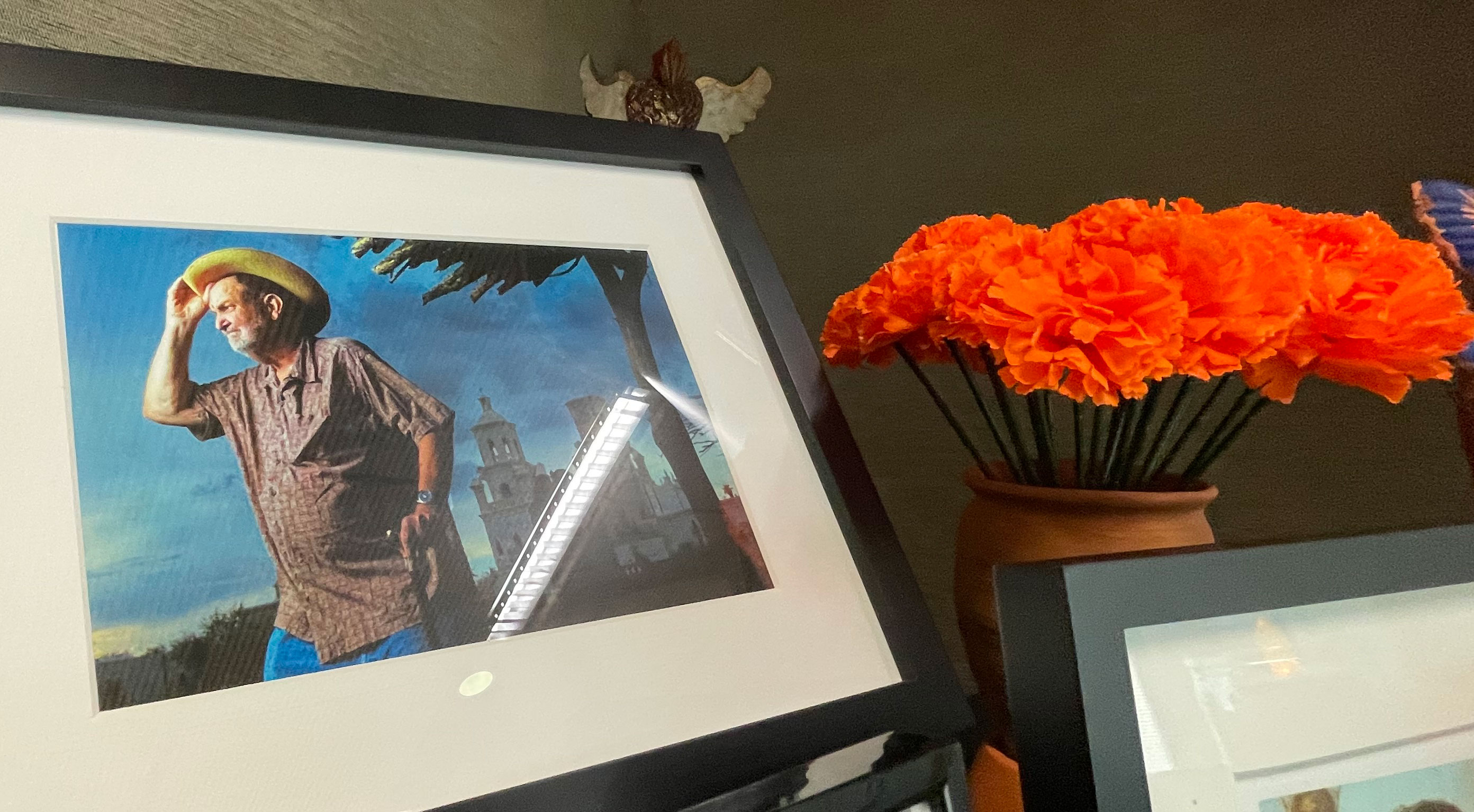 The altar at the University of Arizona's Special Collections Library has photographs of many of the staff's relatives or friends, including that of James "Jim" Griffith who died in 2022. Among many other roles, Griffith was a popular folklorist and educator.
The altar at the University of Arizona's Special Collections Library has photographs of many of the staff's relatives or friends, including that of James "Jim" Griffith who died in 2022. Among many other roles, Griffith was a popular folklorist and educator.
The bright and colorful multi-layered display in back in 2022, and everyone is invited to participate, regardless of religion, race, or ethnicity.
"I think this is the beautiful part of the melting pot. This is truly the melting part that there's a tradition and that it's widely accepted. It's part of all of us," says Patricia Ballesteros, a senior librarian.
Amanda Howard grew up in Kansas where she began taking Spanish in the fifth grade and started becoming familiar with various cultural aspects from Latin America.
When she moved to Tucson to work on her master's degree, she was able to dive deeper by actually participating in events and customs.
"I brought a photo of my grandmother and a photo of my best friend in college who passed away about 20 years ago. I'm also going to bring a photo of my uncle who passed away during the pandemic, and we were not able to do a celebration of life yet," Howard says.
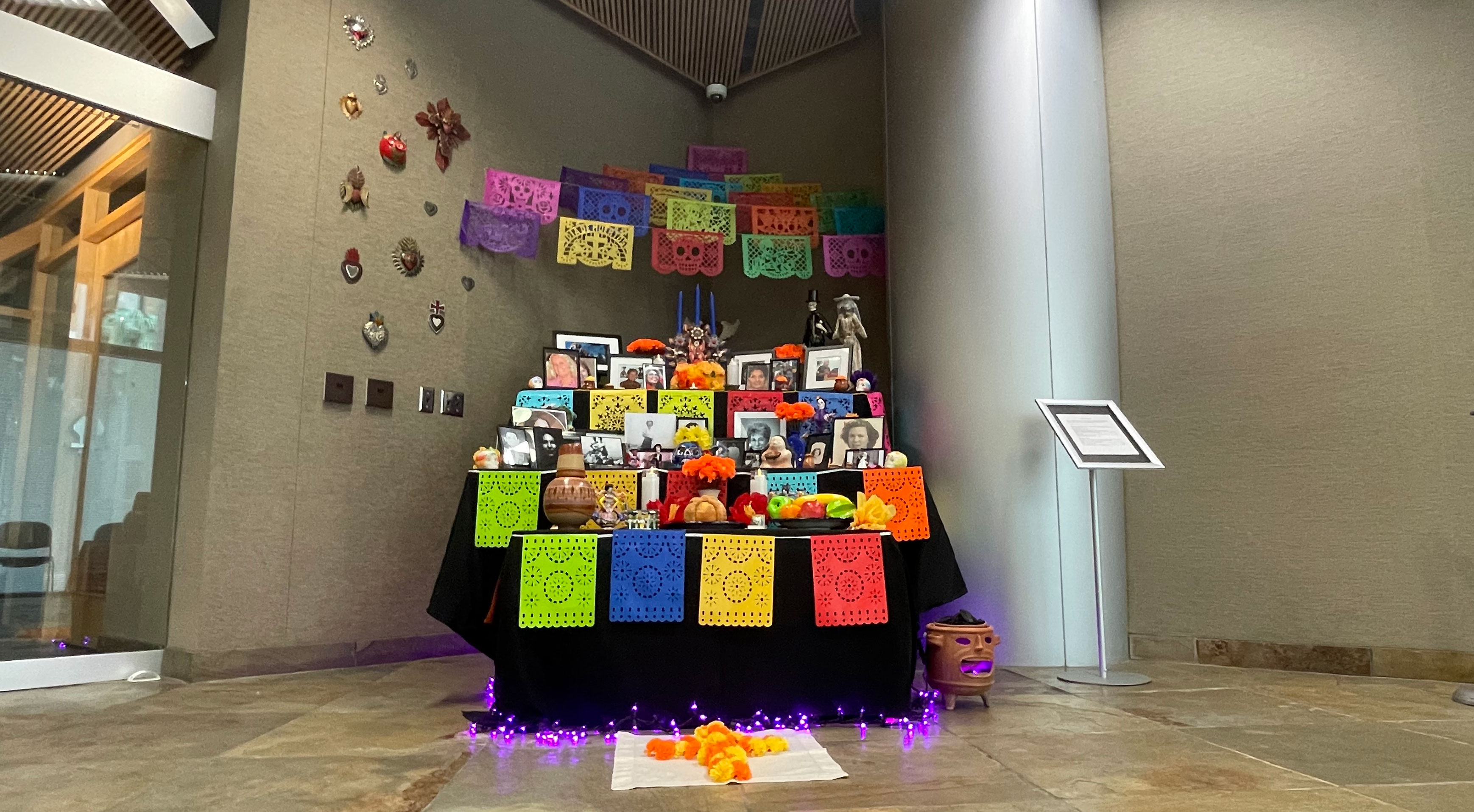 Día de los Muertos is an ancient blend of Native American and European traditions that is becoming more familiar to a growing number of people internationally. This altar is in the University of Arizona's Special Collections Library.
Día de los Muertos is an ancient blend of Native American and European traditions that is becoming more familiar to a growing number of people internationally. This altar is in the University of Arizona's Special Collections Library.
Lorenia Diaz also works at the library and is helping out with the altar. During an interview, she becomes emotional when reflecting on her grandparents, who are deceased.
Día de los Muertos, she points out, serves as a visual and sentimental tribute.
"When your life is so busy and you don't always remember those that have passed away, it's a special day that you come together, you just concentrate on those people," she says.
"It's a dedication for them," she adds.
For the staff at the library and Anna Ochoa O'Leary, from Mexican American Studies, Dia de los Muertos presents an opportunity to unify diverse peoples under a common umbrella.
"We can create that sense of community and belonging while we're alive. And in so doing, we make the world a little bit better," Ochoa O'Leary says.
"Learning to accept each other and to trust each other, to share with each other, to be compassionate, to be empathetic to those who have less, who come from afar, who are not from here."
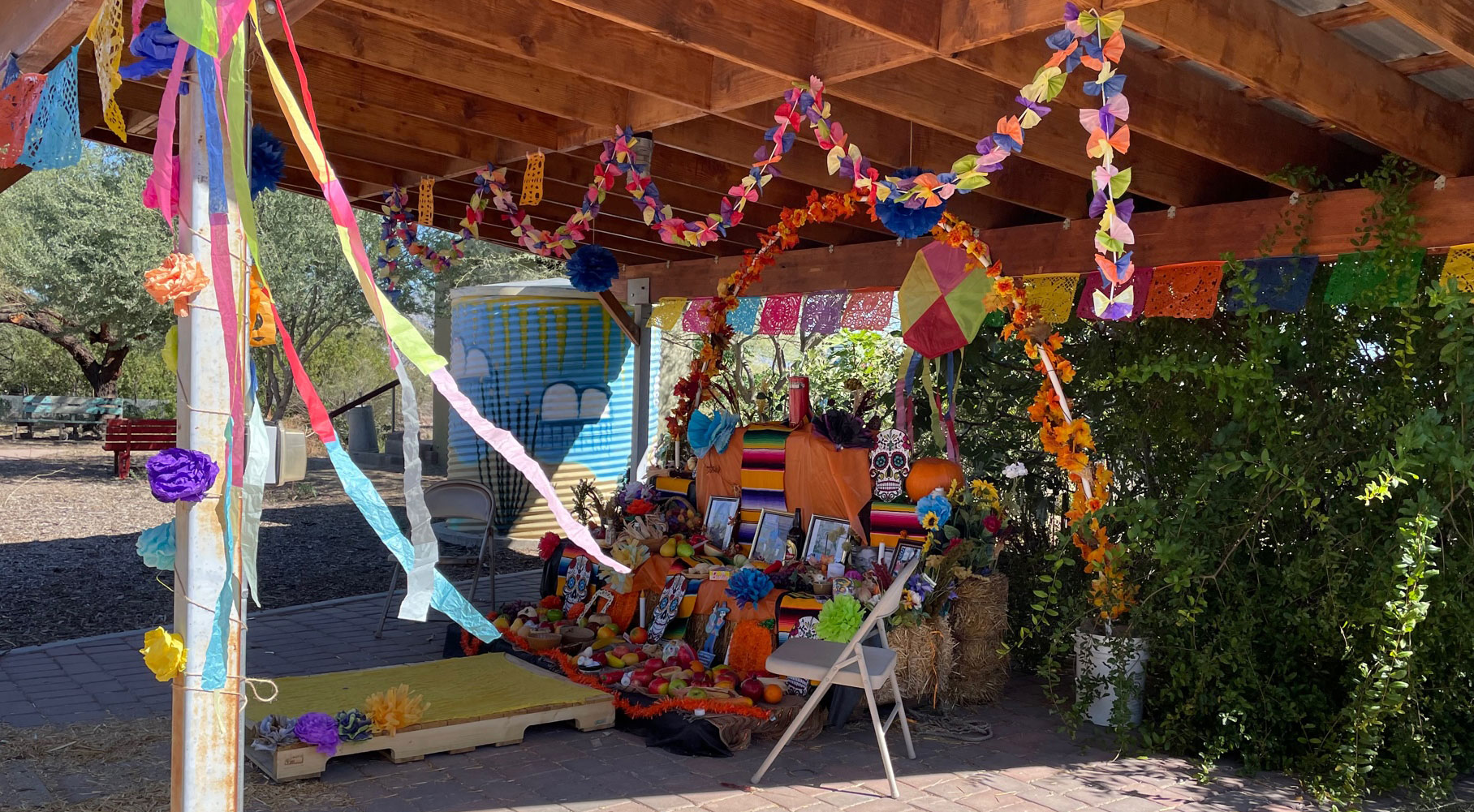 Dia de los Muertos altars have become common in many regions, including Tucson. This display is at Las Milpitas de Cottonwood Community Farm which is operated by the Community Food Bank of Southern Arizona.
Dia de los Muertos altars have become common in many regions, including Tucson. This display is at Las Milpitas de Cottonwood Community Farm which is operated by the Community Food Bank of Southern Arizona.
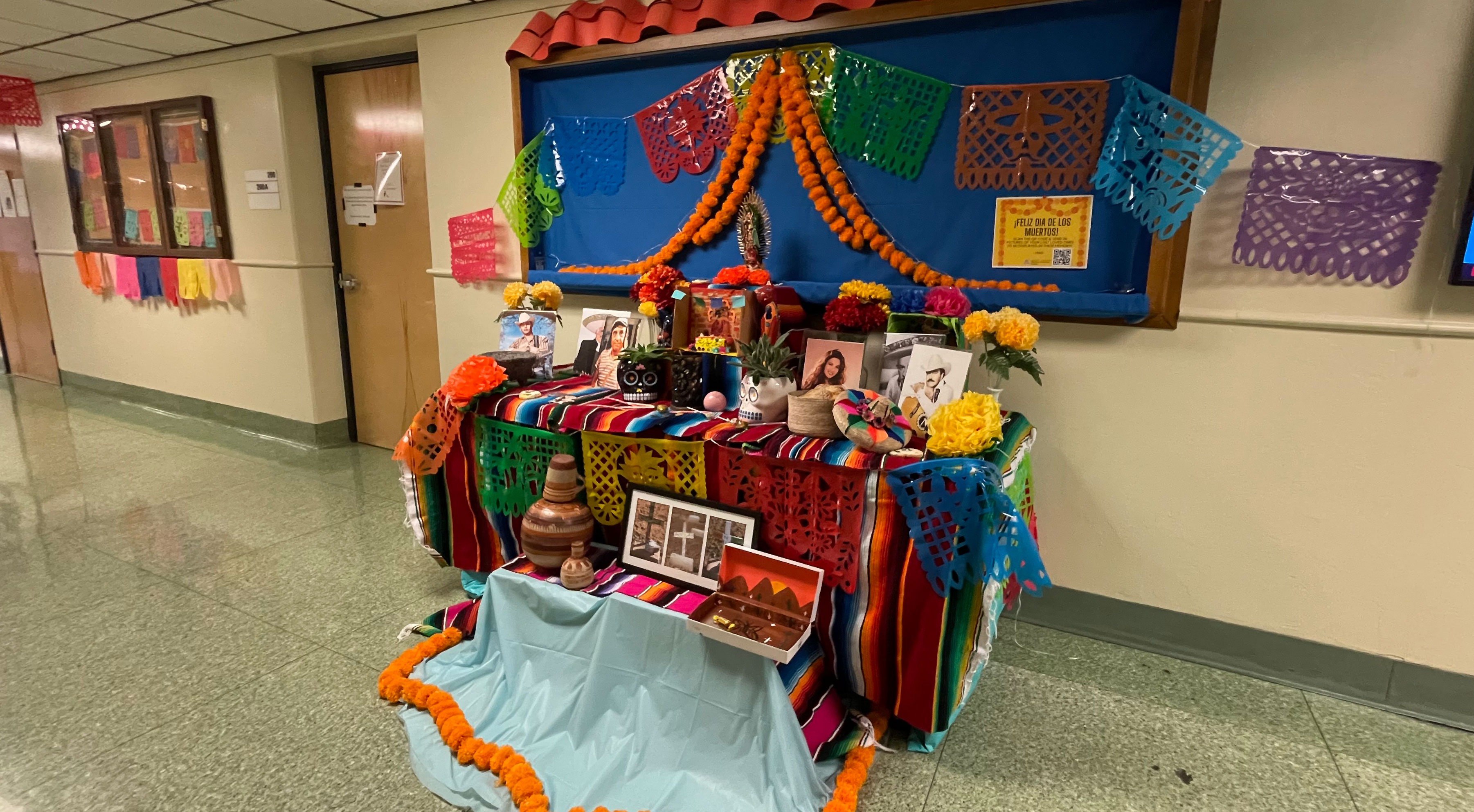 This Día de los Muerto display is at the University of Arizona's César E. Chávez building, where Mexican American Studies is located.
This Día de los Muerto display is at the University of Arizona's César E. Chávez building, where Mexican American Studies is located.
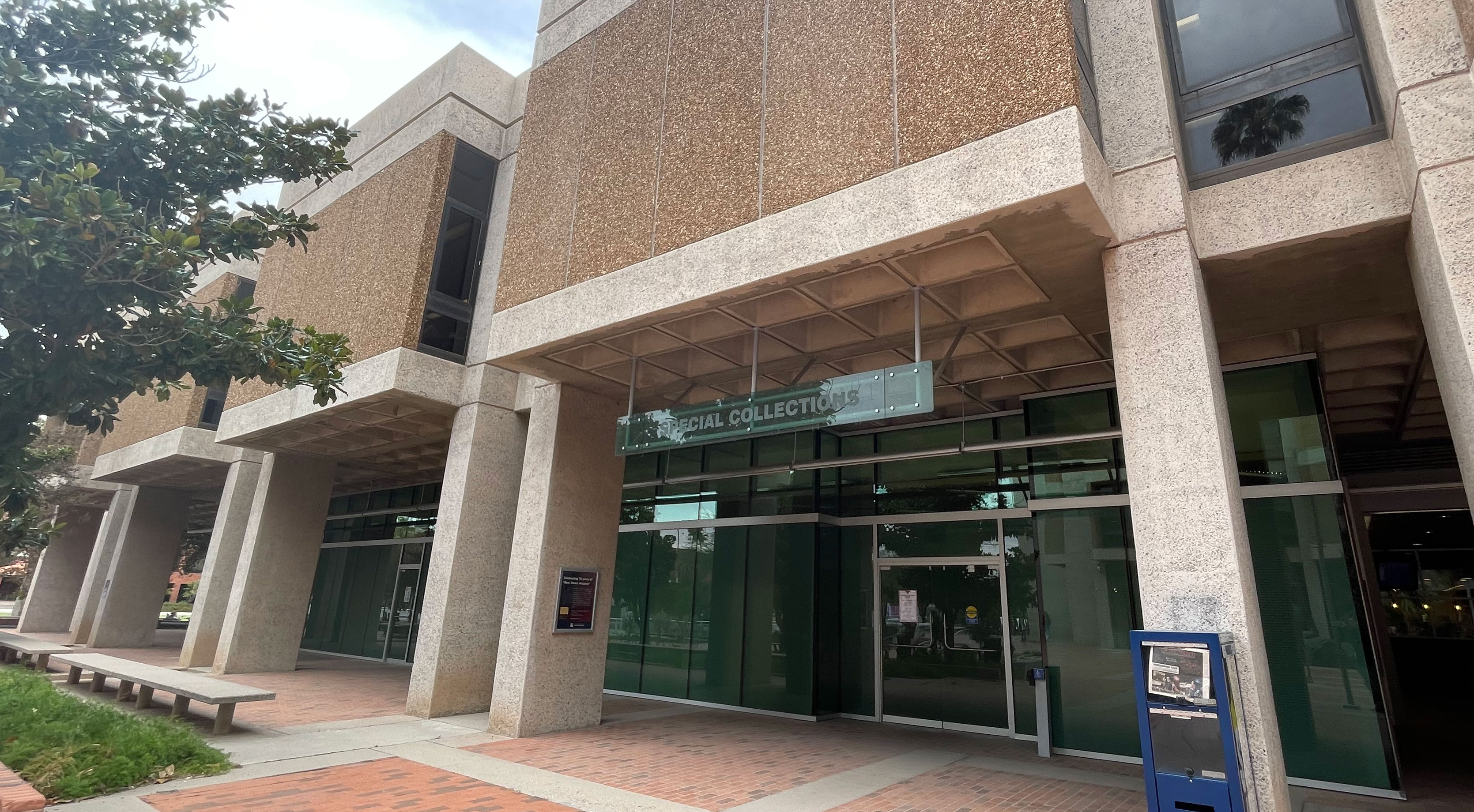 Staff members at the University of Arizona's Special Collections Library began celebrating Día de los Muertos with other employees years ago. Their altar is seen when you walk inside the building.
Staff members at the University of Arizona's Special Collections Library began celebrating Día de los Muertos with other employees years ago. Their altar is seen when you walk inside the building.

By submitting your comments, you hereby give AZPM the right to post your comments and potentially use them in any other form of media operated by this institution.